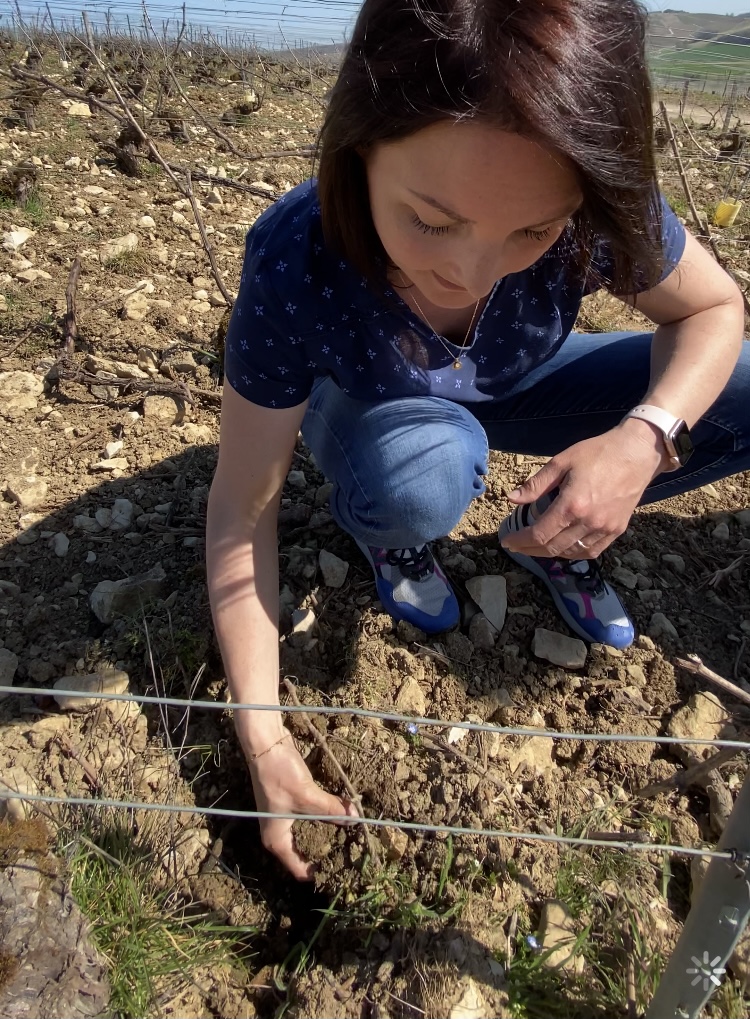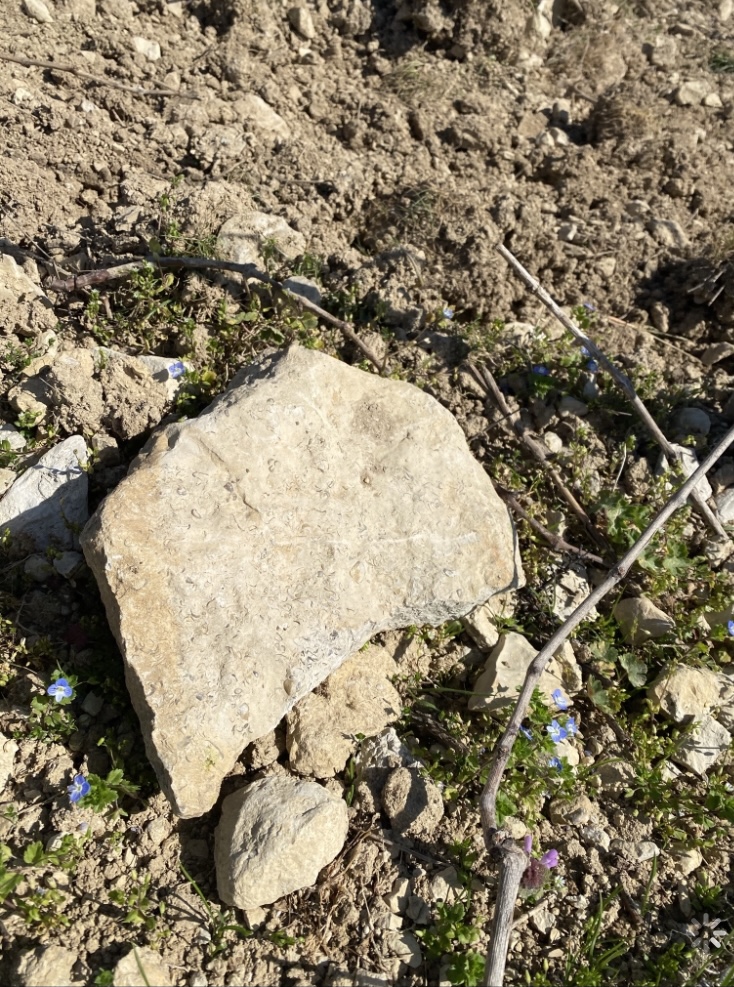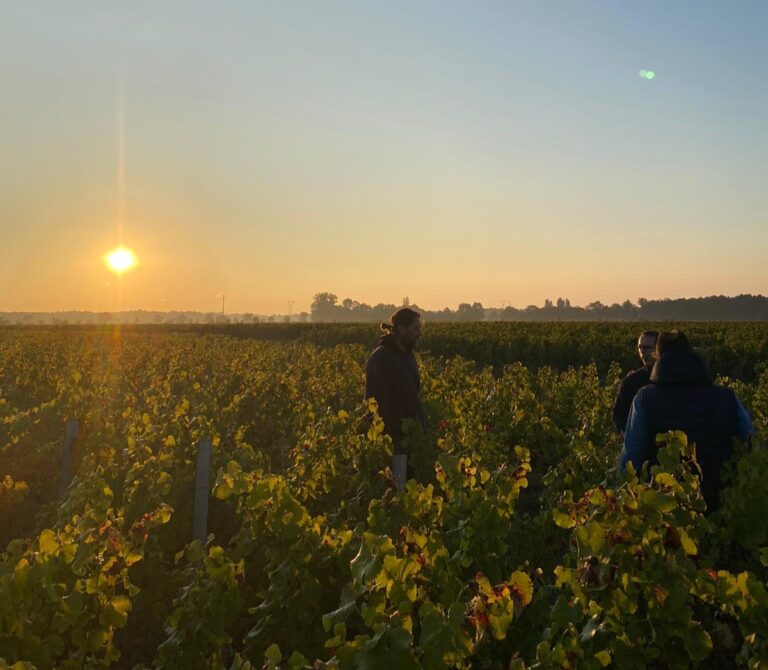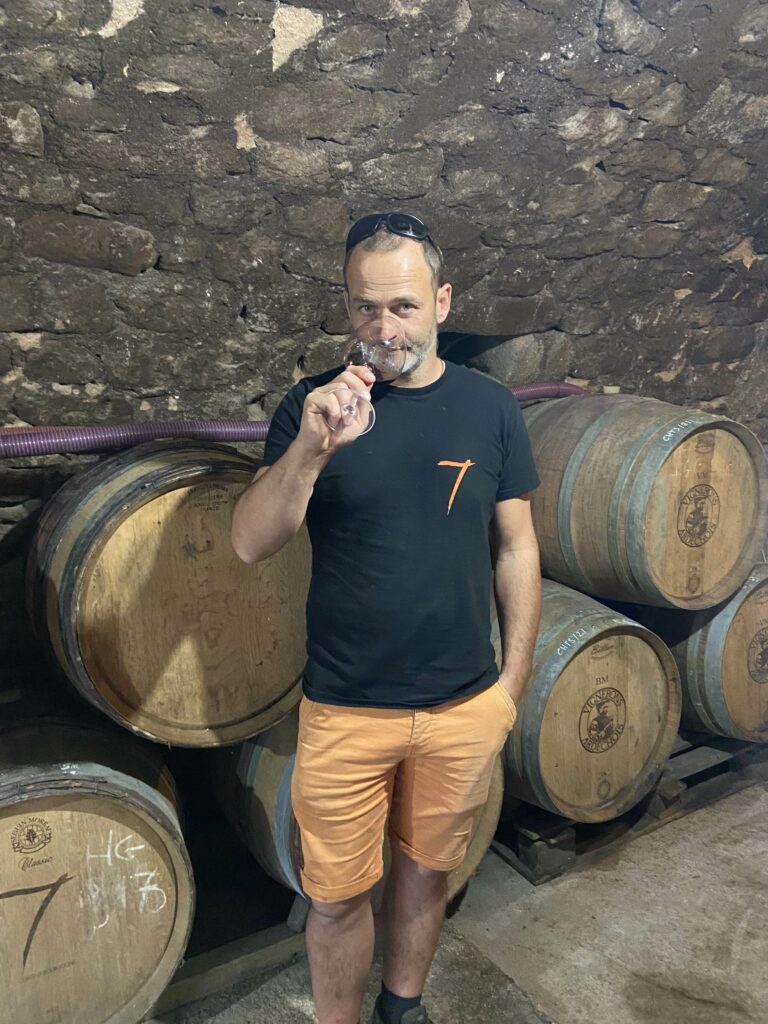Digging in Organic Kimmeridgian Soils with Vigneronne Delphine Brulez

26 April, 2021
Noé-les-Mallets
Champagne
At the end of March, we were in Champagne, at the Louise Brison estate located in the Côte des Bars.
As usual, Delphine Brulez welcomed us with generosity and talked to us about her vineyard with all the passion that drives her.
Her energy is entirely focused on understanding her Terroir, and interpreting in such a way that her Champagnes best express the place from which they come.
Since 2012, Delphine uses only surface treatments of sulfur and copper to protect her vineyard, and since 2020, the entire estate is certified organic.
Virtual Visit to Champagne with Delphine Brulez
Through the following videos, Delphine speaks about her soils, the grape varieties planted and the aromatic profiles of the resulting wines.
- Presentation of the Pinot Noir plot
- Aromatic profile of the Pinot Noir of the Louise Brison estate
- Presentation of the Chardonnay plot
- Importance of a soil rich in micro-organisms

Parcel of Pinot Noir
We are in a group of coherent micro plots on a total surface of 8 ha facing South East. The vines are planted with Pinot Noir on the lower part of the hillside, and Chardonnay on the upper part.
The subsoil here dates from the Kimmeridgian period, a geological stage dating from the Upper Jurassic (about 150 million years ago). The characteristic is the alternation of marls (soils rich in clay) and limestone banks rich in fossils. One of them is the Exogyra virgula, a characteristic fossil of the Kimmeridgian stage.
The clays present in the soils of this parcel play an important role as a water bank, very helpful during the hot and dry summers (especially in the last vintages).
Delphine works her soils lightly, so as not to disturb the life of the soil, but just enough to avoid spontaneous vegetation between the rows that would compete with the roots of the vines for water.
Delphine regularly measures the life of her soils and the rate of mycorrhization, which allows her to know the capacity of the roots of her vines to feed on the minerals of the soil.
Video 1: Delphine speaks about her parcel of Pinot noir
What type of Pinot Noir is produced from this soil type?
The resulting wines from this plot of Pinot Noir have a lot of acidity, tension and salinity. Wines that make you salivate.
These are indeed what we were able to taste from the still base wine in the barrel during our visit.
The 2020 vintages, still on lees in barrels today, present an incredible freshness and tension, despite the richness of the musts from this solar vintage.
It is this freshness that will allow the all Champagnes at Louise Brison to age in bottle for a minimum of five years before disgorgement, or even longer for the exclusive Légende range. The Légende champagnes remain on the lees in the bottle while waiting to be disgorged, so that time can help develop the full complexity of the wines.
Explanation of the aromatic profile of wines from vines planted on Kimmeridgian soils
Parcel of Chardonnay – Cuvée Tendresse
The Louise Brison estate also produces a Champagne blanc de blancs, cuvée Tendresse.
Here the Chardonnays are planted a little higher on the hillside, still on Kimmeridgian soil but with a lesser depth of soil.
Exploring the Chardonnay plot of Champagne Louise Brison
Champagnes Available
CHAMPAGNE EXTRA BRUT 2015

This extra-brut cuvée is a blend of 50% Pinot Noir and 50% Chardonnay, made exclusively from grapes from the 2015 vintage. The grapes are harvested, pressed, vinified and aged in barrels separately.
After blending then bottling the wines, the Champagnes are kept for 5 years on laths to develop all their complexity.
Delphine explains that the Pinot Noir brings salinity and freshness (characteristic of this grape variety when planted on these typical Côte des Bars soils) and the Chardonnay more roundness, structure and volume.
It is the blending of the two that makes the wine harmonious and suitable for long aging.
Effervescence : Fine and persistent bubbles.
Colour : Pure light gold
Nose : Elegant nose, complex aromas, peaches, pears, grapefruits, citrus and a touch of minerality.
Palate: A fine complexity with a well-balanced, we appreciate its hints of citrus and toasty notes. Good length. A champagne that needs to be opened 10 minutes before tasting !
CHAMPAGNE TENDRESSE BLANC DE BLANC 2012

100% Chardonnay vinified and matured in oak barrels. Partial malolactic fermentation. Made exclusively from grapes harvested in 2012. Zéro dosage. Disgorged July 15th, 2020.
93/100, WineEnthusiast (Nov.20)Brut Nature zero dosage was not intentional for this millésime, but it was mother’s nature choice.
This is made only from Tete de Cuvée juice – usually the purest and most fine, austere – in order to keep a precise level of acidity, which takes a bit more time to open up.
Effervescence : Refined bead of fine bubbles. Colour : A brilliant yellow colour.
Nose : Intense and very aromatic with white flowers, rose, violet and yellow fruits. Elegant touch of oak.
Palate : Explosive on the palate with a great level of purity, beautiful aromas of flowers and fruits. A lot of finesse and precision. A long and fresh finish ! Convincing Tendresse!
Nurturing Living Soils & Measuring Mycorrhization
Delphine is convinced that vines planted on living soils with a high microbial life will help her vines to better defend themselves against diseases.
All her work in the vineyard is done with the aim of maintaining this soil life, which she measures regularly.
The mycorrhization rate of her soils reaches 70%. This is a very high rate and it is considered that above 50-60% mycorrhization is effective for the vine, which is then able to produce an important self-defense mechanism against external aggressions (diseases, parasites).
Not all living soils are equal when it comes to having such a high ratio of mycorrhization. Here, the soils of the Louise Brison estate lend themselves to these high mycorrhization rates because of their clay-limestone nature; they can form large clay-humus complexes capable of fixing minerals and helping the vines to capture this mineral sphere.
As a reminder, mycorrhization is a symbiosis between the roots of the vine and the filaments of fungi. Through this symbiosis, a better feeding of the plant is possible, especially in organic nitrogen.
But the microbial life is broader and does not stop only with the fungi. There are also thousands of bacteria, yeasts and small insects that live in the soil and contribute to an excellent root environment for the vines at the Louise Brison’s estate.
Delphine Brulez Explaining the Living Soils at Champagne Louise Brison

